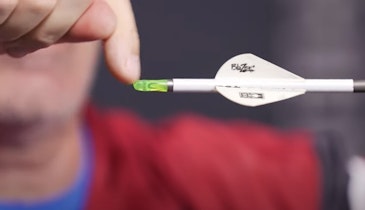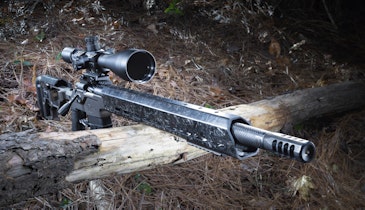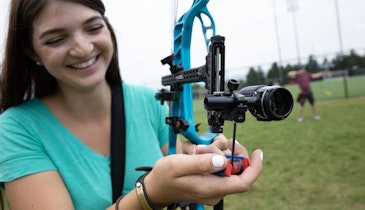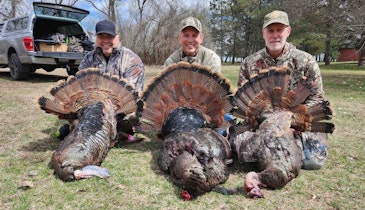The coyote sitting on the irrigation ditch across the field completely ignored my best calling efforts. I figured it was either call shy or road wary as I settled the crosshairs of my Nikon scope — set on 12X — a foot or so over its head. I slowly let out my breath and gently squeezed the trigger of my ultra-accurate Shilen-barreled .220 Swift.
Through the scope, and simultaneously with the sharp crack of the rifle, I saw snow kick up on the slope behind the coyote and figured I had missed the long shot. Seemingly in slow motion, the coyote simply toppled back into the irrigation ditch and disappeared, never to reappear.
A few minutes later my buddy and I got in the truck and drove around the ranch yard to the spot where the coyote had disappeared. I was a bit surprised to find the dead coyote at the bottom of the canal! The 52-grain Sierra HPBT bullet had hit the coyote right in the center of the chest, exiting through the spine, killing it instantly. When I ranged the distance back to the road where I had shot from, it was 551 yards — my longest shot to this day.
Today, long-distance shooting is the in-thing with precision rifle/scope combos the latest rage. There are many excellent long-range shooting schools scattered across the country, too. As such, long-range predator shooting is becoming more popular and the 550-yard shot I made is not considered that unusual for serious long-range shooters. For some, it’s the extra challenge of hitting a small target at extreme distances and for others it may be a cop-out for not being adept enough at hunting and calling predators to get within close range of them.
As with any other endeavor there are a few shooters that will practice and work at perfecting their long-distance shooting until they excel at it. Unfortunately, an equal percentage of wannabe shooters will spend a fortune on the latest in shooting equipment and never become proficient enough to be a danger to any predator beyond rock throwing distance. The big question is, how will this trend affect overall predator hunting and calling and the ethics of such.
Al Morris, four-time World Championship Coyote Calling Contest winner and FOXPRO Furtakers TV host, thinks there is a definite place for long-distance predator shooting. He has spent considerable time working on his shooting skills to take advantage of today’s super accurate rifles, scopes with accurate long-range adjustment features and bullets that are extremely accurate with maximum long-range trajectory capabilities. Morris does however, rely mainly on his hunting smarts and calling capabilities for the bulk of his predator hunting endeavors, but figures his long-range shooting skills just add another dimension to his predator hunting successes.
On a recent California-calling venture Morris and his partner were calling in wide-open country with little if any cover and simply laid out prone in the open grass cover for their calling stands. They called in 23 coyotes and shot 12 with a shotgun at point-blank range. Most of the others were within easy rifle range for Morris’s Ruger .243. However, on one stand three coyotes responded and his partner killed two with a shotgun at 30 yards. When the third coyote finally stopped for a look back, Morris dropped him cleanly at 570 yards. That’s getting the most out of your hunting venture!
Morris and I, along with professional predator caller Byron South, agree that long-distance shooting probably will have some impact on calling and hunting predators in certain areas of the country. Caused mainly by those that are not adept at this challenging aspect of predator hunting to make consistent hits on their long-range targets. A predator missed in any situation leaves that critter with better survival instincts and might reduce the next shooter’s chance of success. A missed coyote might run 100 or 200 yards and turn back to see what happened. As these misses happen at farther and farther distances, those same coyotes can run farther and farther each time they are spooked.
The three of us agree strongly that the ethical aspects of long-range predator shooting are not a major concern. However, long-range shooting at big-game animals creates serious ethical questions that need to be given some serious consideration for the future. What’s your take on sniping predators and long distances?






